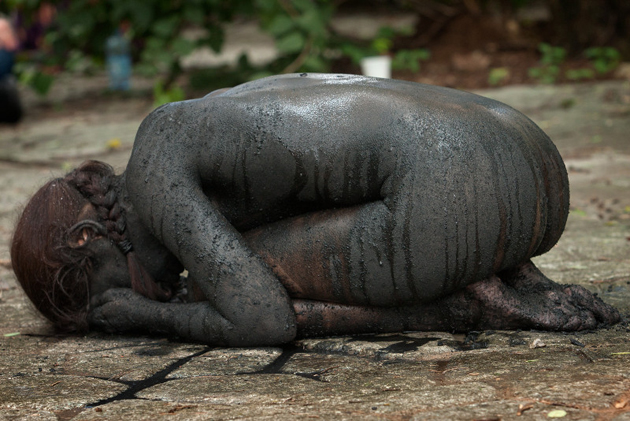
Politics, Woman, Violence, Organic and Death, these are the five keywords and macro themes that guide the path of Estoy Viva, the exhibition with which PAC – Padiglione d’Arte Contemporanea in Milan – and Civita celebrate the work of the extraordinary art performer Regina José Galindo (b. 1974 Guatemala city).
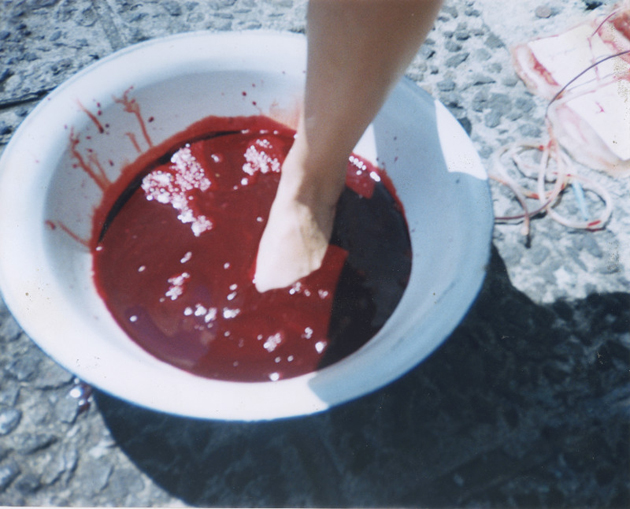
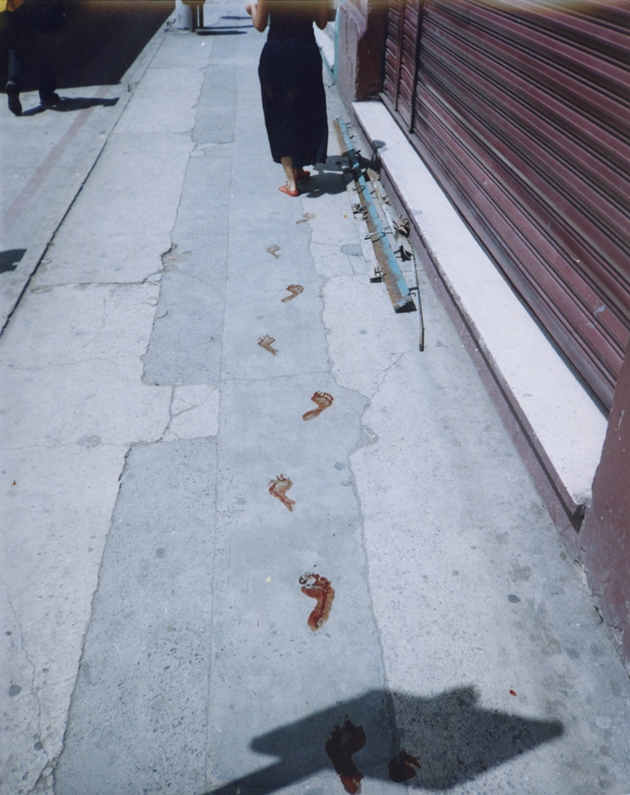
Someone once said that art doesn’t have to be pretty, it has to be meaningful, feeling and returning the reality through the poetics of the artist, sometimes in direct and unpleasant ways. The work of Galindo definitely falls within this category, representing the power of a politically active art, involved with thorny social issues, without being merely rhetoric. Using her apparently fragile body as an expressive medium and forcing it to both mentally and physically arduous tests, the Guatemalan artist examines and denounces racial and sexual discriminations, cultural injustices and abuses of power that keep on distressing contemporary societies. Making reference to the violence of her country, Galindo creates images characterized by a strong intensity and a universal language depicting, most of the time, nasty situations aimed at breaking collective indifference.
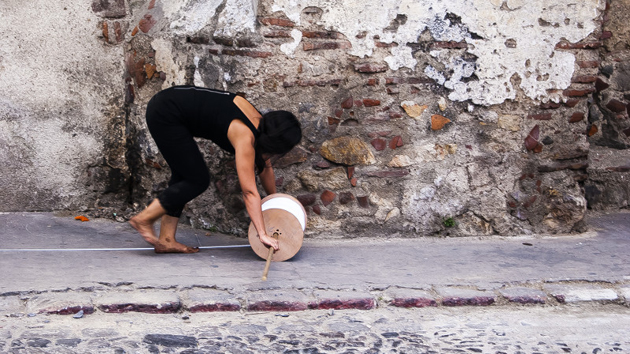
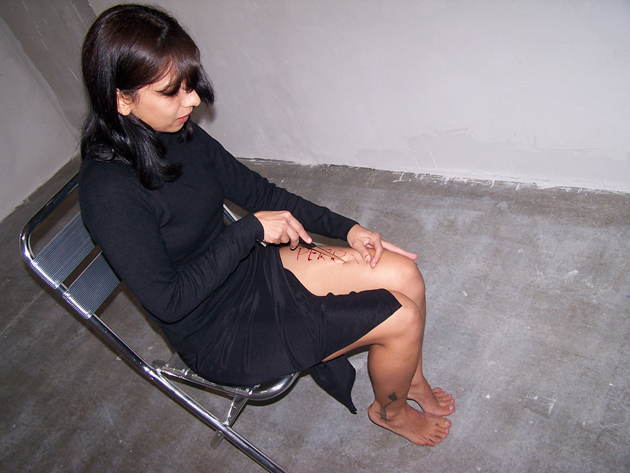
Estoy viva presents a significant selection of works that encompass a unique research, which cannot help but arouse deep emotions: in Confesión (2007) the artist is dragged in a wretched room by a brute, who pushes her head in a can full of water while she cries and wiggles, without being able of break free; in ¿Quién puede borrar las Huellas (2003) a grieving Galindo, dressed in black, walks from Guatemala’s building of Congress to the National Palace holding a washbowl full of human blood where she dips her feet leaving prints on the streets as a protest against the presidential candidacy of Guatemala’s former dictator José Efraín Ríos.
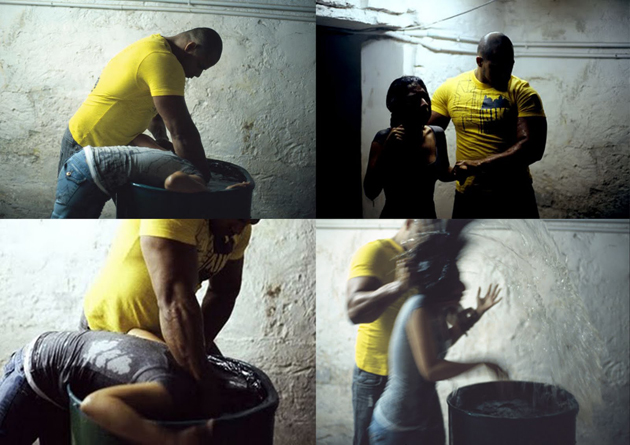
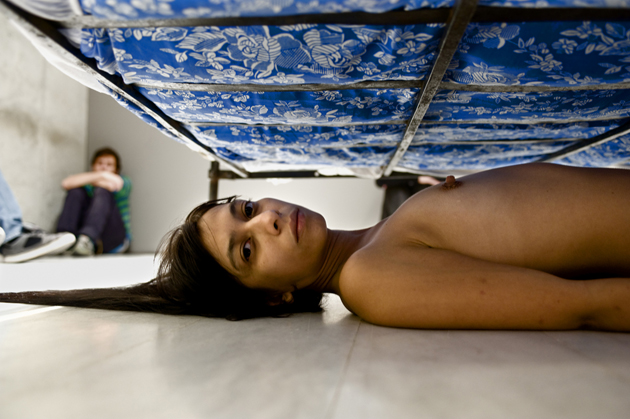
In a dramatic performance focused on violence against women entitled Perra (2005) Galindo injured her body carving the word “bitch” on her leg, while in Himenoplastia (2004) she subjects herself to surgical reconstruction of her hymen, and in Piedra (2013) the artist turns herself into a stone-like lump while a man and a woman urinate on her. The comprehensive show also displays the latest part of Galindo’s research devoted to natural elements, which gets her close to the work of Ana Mendieta, another emblematic artist, who uses body as main art conductor.
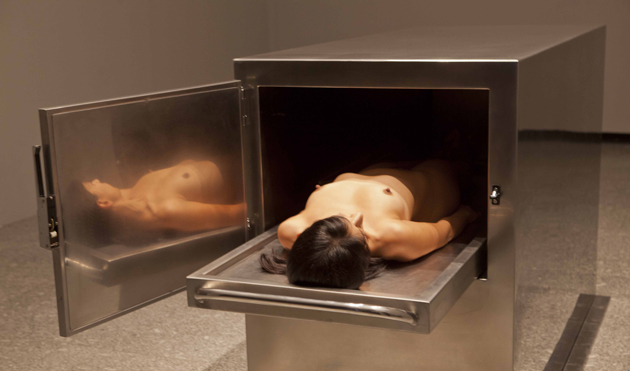
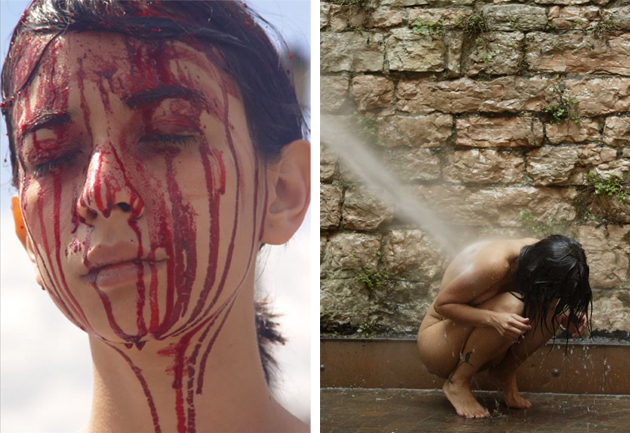
Galindo’s sacrifices don’t give any answer, but raise questions that wake up the audience’s ethic and moral sensibility. Everybody is involved; no one can withdraw from the experience.
Estoy viva will run until June 8th 2014 at PAC in Milan.

